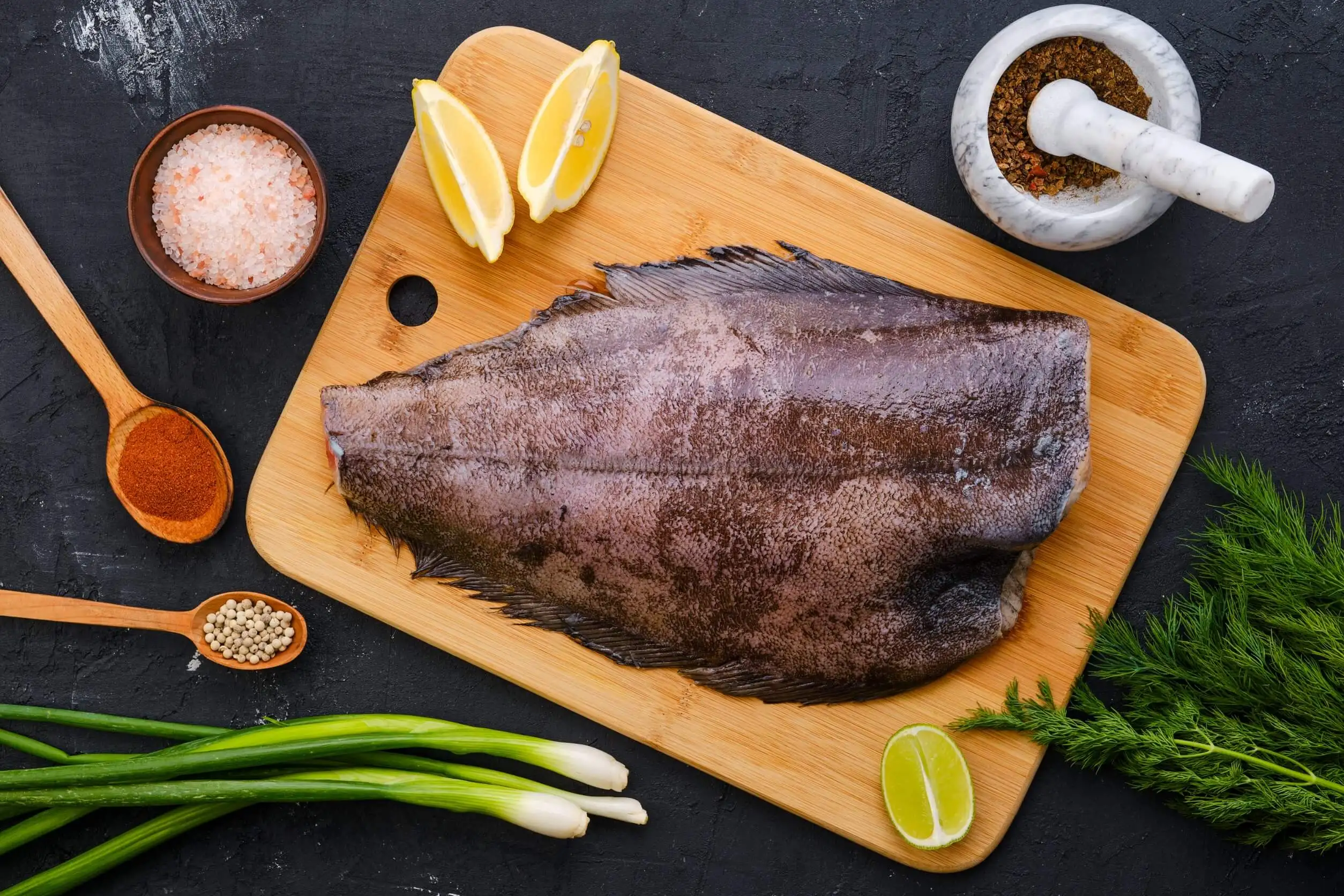Turbot: Benefits and Uses in the Kitchen


Written and verified by the nutritionist Saúl Sánchez Arias
Turbot is a fish with excellent organoleptic characteristics and great nutritional content. It can be included in the diet on a frequent basis to help maintain a good state of health over the years. In addition, it’s a very versatile product at a culinary level.
Before we begin, we should point out that many nutrition experts advise including fish at least 2 or 3 times a week in the diet to avoid the development of pathologies in the medium term. These foods have a very beneficial lipid profile. In fact, its frequent intake has been linked to a lower risk of heart disease.
Benefits of turbot

First of all, turbot is a fish with a low fat content. And the fats it contains are of excellent quality, so in no case will they negatively affect the levels of internal inflammation. It even contains omega 3, a lipid that has been shown to help prevent problems related to the cardiovascular system.
However, it stands out for its protein content. These nutrients are of high biological value, and contain all the essential amino acids. Their digestibility rating is also good.
Thanks to them, the recovery of lean tissue after intense physical exertion is improved and alterations affecting the quantity or functionality of the body’s muscle mass are avoided, as stated in a study published in BioMed Research International.
We mustn’t forget that it’s a satiating food. The proteins themselves are decisive in suppressing appetite. The water it contains will also help to do so. In addition, it doesn’t have a high energy density, so it can be included without any problem in the context of a low-calorie diet with the aim of losing weight.
Finally, special mention should be made of its iodine content. This element is necessary in order to ensure the production of thyroid hormones. According to research published in the journal Endocrine, Metabolic & Immune Disorders Drug Targets, a deficiency of this element could lead to hypothyroidism, which conditions the proper functioning of the metabolism and the feeling of vitality.
From the point of view of vitamins, turbot provides many micronutrients of group B. These are involved in the various metabolic processes of the body. These are involved in the different metabolic processes and are therefore essential for obtaining energy. They’re water-soluble and their daily consumption must be guaranteed to avoid deficits.
Get to know more: Catfish: Nutrition, Benefits and Possible Risks
How to use turbot in the kitchen

Turbot meat usually has a firm consistency and a white color, which makes it attractive. However, it has a lot of bones, which can be a drawback for some people. Once the fish is cleaned, it can be cooked in several different ways. Normally, it’s good grilled, although it’s excellent baked as well.
This fish is usually served with a side dish. Vegetables shouldn’t be missing to ensure an optimal supply of vitamins and antioxidants. As sources of carbohydrates, it’s best to prioritize tubers in this case. Both potatoes and sweet potatoes combine well with this type of fish. They can be baked or boiled so as not to increase their calorie value too much.
Turbot can also be served with some kind of sauce to improve the final result from an organoleptic point of view. Tartar sauce or aioli are usually the most common. However, they should not be abused.
Otherwise, the weekly calorie balance could be unbalanced, which would result in a progressive gain of fatty weight that will condition the inflammatory state in the internal environment.
Read more: Tartar Sauce: Nutrients, Benefits and How to Consume It
Turbot, a fish with a high nutritional quality
As you’ve seen, turbot is a fish that has many nutritional properties. It’s excellent to include in your weekly diet, although it’s usually quite expensive too. The truth is that it looks great both grilled and baked, and is a very versatile product in the kitchen. You only need to try out the different recipes to choose your favorite one.
Before finishing, we have to comment that it’s good to alternate blue and white fish in your diet. The former have a higher fat concentration, but we’re talking about fatty acids of the omega-3 series in their great majority. These are elements that are considered positive for the body and they help to prevent inflammation. In this way, mitochondrial and organ dysfunction is prevented.
All cited sources were thoroughly reviewed by our team to ensure their quality, reliability, currency, and validity. The bibliography of this article was considered reliable and of academic or scientific accuracy.
- Elagizi A, Lavie CJ, O’Keefe E, Marshall K, O’Keefe JH, Milani RV. An Update on Omega-3 Polyunsaturated Fatty Acids and Cardiovascular Health. Nutrients. 2021;13(1):204. Published 2021 Jan 12. doi:10.3390/nu13010204
- Martone AM, Marzetti E, Calvani R, et al. Exercise and Protein Intake: A Synergistic Approach against Sarcopenia. Biomed Res Int. 2017;2017:2672435. doi:10.1155/2017/2672435
- Triggiani V, Tafaro E, Giagulli VA, et al. Role of iodine, selenium and other micronutrients in thyroid function and disorders. Endocr Metab Immune Disord Drug Targets. 2009;9(3):277-294. doi:10.2174/187153009789044392
This text is provided for informational purposes only and does not replace consultation with a professional. If in doubt, consult your specialist.








